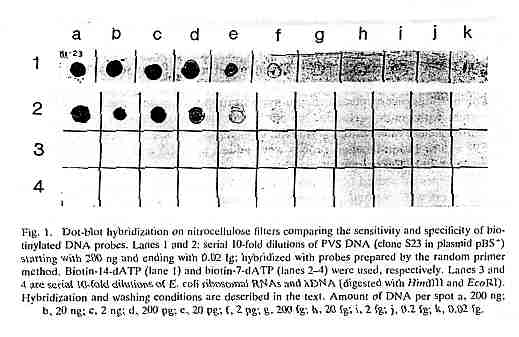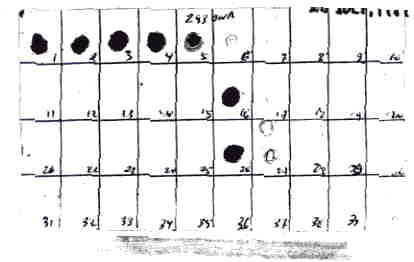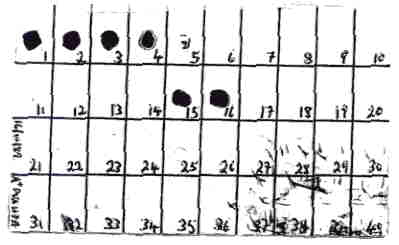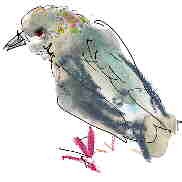Norman
Allan | ||||
| A
letter to the Binding of Ultradilute
Viral DNA:
| |
| In
the late nineteen-eighties Mounir AbouHaidar and Mohammed Eweida (MAME) were working
on an assay to detect minute quantities of specific viral DNA. Figure 1 is an
example of the "dot-blots" they prepared using potato virus S published
in the Journal of Virological Methods.
|  |
 Fig 2 | |
 Fig 3 | |
|
In June of 1989 AbouHaidar moved
his laboratory. In the new lab the phenomenon was no longer robust, and the work
was abandoned. (Again, these circumstances are discussed in the cited essay.) Clinical trials indicate that there is real phenomenon involved in the "potentization" of homeopathic remedies by ultradilution. Beneveniste's 1988 Nature paper on basophil degranulation with ultradilute antigen was "debunked" by the editors, but not refuted or explained. It would be interesting to find out if the Eweida AbouHaidar ultradilution effect can be replicated and, through this, how homeopathy works. If several labs try the assay, that would provide a measure of how robust homeopathic phenomena in a laboratory environment. I can think of no better way of accomplishing this than to ask the Journal to publish a letter like this. I would like to ask the Journal to invite researchers working with dot-blot (and other methodologies involving serial dilution) to take those dilutions out to the10-30 or 10-40 (a process which involves relatively little extra work) and report back to the journal on their finding.
| |
|
1 M. Eweida et al. J.Virological Methods, 26 (1989) 35-44 "Highly sensitive and specific non-radioactive biotinylated probes for dot-blot, Southern and colony hybridizations" | |
 |